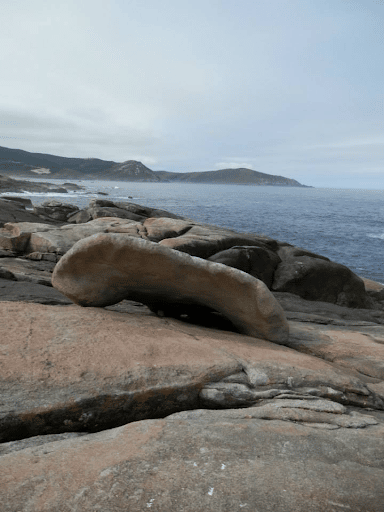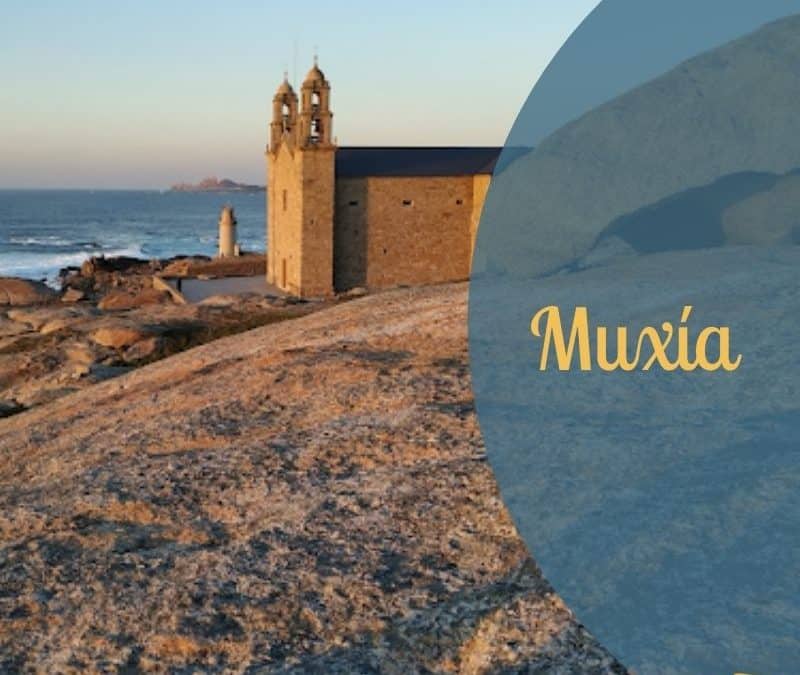After making it to Santiago de Compostela, many pilgrims decide to continue on to the sea, to the ‘end of the world’ in Fisterra. Others prefer to go to Muxía, also on the same stretch known as Costa da Morte (coast of death) but further north. And some, of course, go to both places. They’re both close to 90km from Santiago, and they both have a connection to the Camino.
We’ve already visited Fisterra in a previous post, so today we are taking a walk through the history of Muxía with Sarah Blanquet, who lives there.
Muxía and the Camino
This little fishing town, located on the coast of Galicia, is considered one of the last stops of the Camino de Santiago. But in order to understand how this small remote village became an essential part of the Camino, we must dive into history.
Since the beginning of time, different populations have lived in this beautiful region in the northwest tip of the Iberian peninsula. Megaliths such as the Dolmen de Dombate (Dombate dolmen) bear testimony to ancient settlements and remind us of the strong connection between nature and spirituality in this area. Indeed, these monuments reveal that stones in this region have always been sacred. Stones marked spiritual places. Stones held healing powers. Stones connected humanity to the great beyond.
These stones and beliefs transcended time and faiths.
Centuries later, they were to help the apóstol Santiago (saint James) himself. Legend has it that he fell to his knees in despair on the very coast of Muxía, where he was preaching the gospel without much success. Suddenly, the Virgin Mary appeared to him on a boat. It was, of course, a boat made of stone. She comforted and encouraged him and, while her words dissipated in time, she left behind a stone boat that can still be seen to this day.

Stones on the coastline of Muxía.

Church of the Sanctuary of the Virgen de la Barca.

Pedra dos Cadrís, the sail of the stone boat that carried Mary.
As for the ship, the Pedra de Abalar, it has a perimeter of almost 31 square meters and belongs to the set of so-called oscillating stones. This means the stone can move slightly when people walk over it. Over the centuries, this characteristic was believed to have all kinds of purposes: fortune-telling, magical-healing and, above all, fertility-inducing.
Nowadays, Muxía is part of the extension to Fisterra and many pilgrims decide to “walk the extra mile” and enjoy the wonderful views of the sunset in the Océano Atlántico (Atlantic Ocean).
What about you? Where do you want to end your Camino?
Today’s words
*pedra dos Cadrís: ‘pedra’ is the Galician word for stone (piedra in Spanish). Cadrís is also a Galician word and it means hips.
Abalar is another Galician word. It means to rock or swing.
For the pronunciation of Fisterra and costa da Morte, check this post.
Muxía
Dolmen de Dombate
Apóstol Santiago
Santuario de la Virgen de la Barca
Piedras
Pedra dos Cadrís
Pedra de Abalar

Sarah Blanquet is a passionate Spanish teacher who lives in Muxía. She studied a Translation Degree then a Master’s in Teaching Spanish. She helps learners speak confidently and enjoy their learning process.
Make sure you don’t miss any posts by subscribing for free here. That way, when a new post is out, you will get it in your inbox. And… you get access to exclusive content too.



